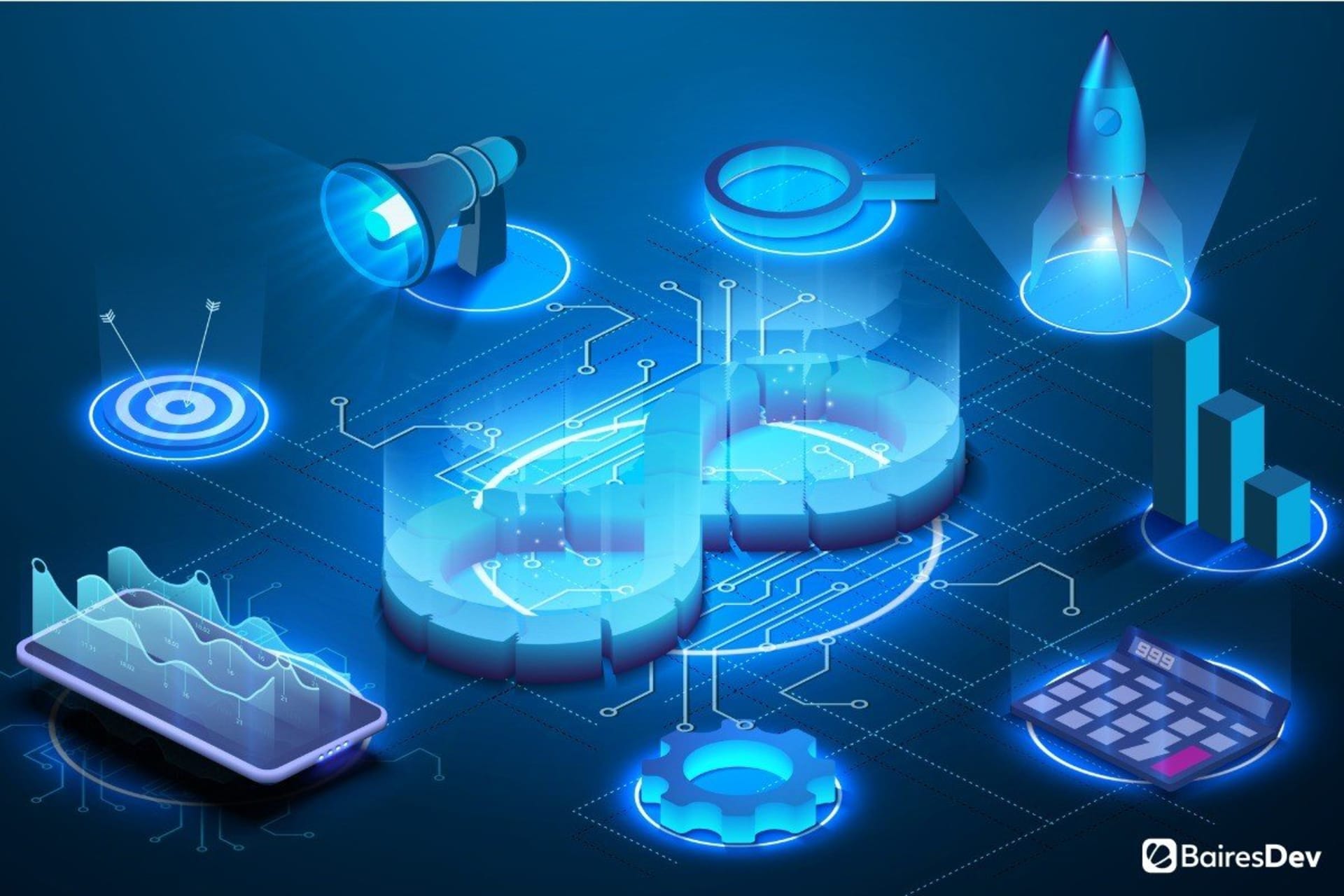DevOps deployment tools are all the rage. And for good reason. With this (relatively) new practice, businesses can achieve unheard-of levels of automation. Once your business has reached that new tech nirvana, it will be more agile, more reliable, and capable of delivering faster and more frequently.
But getting DevOps in place isn’t the easiest rung of the ladder to climb. In fact, it’s pretty challenging. Fortunately, there are plenty of tools out there to make DevOps possible. You can’t achieve DevOps without collecting together some of these tools. On top of that, your staff will have to arrive at a heightened level of collaboration and communication (so it’s not just about the software).
Before we get into the tools, we need to take a step back and define the goal.
What is DevOps?
As the name implies, DevOps development teams take the ‘development’ and ‘operations’ teams and mashes them together so they work in a highly collaborative fashion. The goal of DevOps isn’t just collaboration, it’s about shortening the development lifecycle and providing Continuous Integration and Continuous Delivery (CI/CD).
What is CI/CD?
This is another definition we need to get out of the way. CI/CD bridges the gaps between Dev and Ops to enforce automation in the building, testing, and deployment of applications.
So between DevOps and CI/CD(check out the pros and cons of CI/CD pipelines), you not only shorten the development lifecycle but also automate much of the process. Once these systems are put in place, you’ll find the software development lifecycle will be shorter, more dependable, and accurate.
With that said, let’s take a look at some of the tools you’ll need to make it happen.
What Are the Best Tools for DevOps Deployment
In today’s fast-paced digital landscape, successful deployment of software requires a seamless blend of development and operations. Leveraging the right DevOps tools can make all the difference between an efficient, streamlined process and one fraught with roadblocks and downtime. But with a multitude of tools available, how do you discern which are truly the best? We’ll uncover their unique strengths, how they contribute to accelerating deployment cycles, and why they’re trusted by industry-leading companies worldwide.
| DevOps Deployment Tool |
|
|
| Jenkins |
|
|
| Docker |
|
|
| Ansible |
|
|
| Kubernetes |
|
|
| GitLab CI/CD |
|
|
| Kubernetes |
|
|
| GitLab CI/CD |
|
|
| Terraform |
|
|
| Puppet |
|
|
| Chef |
|
|
| CircleCI |
|
|
| Azure DevOps |
|
|
#1 Git
DevOps all starts with the distributed source code management tool, Git. Git is used for collaboration, tracking, and planning and is one of the key tools for DevOps. Git will serve as your code repository that many of the other pieces of the DevOps puzzle will communicate with.
Think of it this way: Git is the centralized hub to which all other DevOps tools “report.” You’ll deploy automation tools that will constantly check in with Git and, when those tools detect a change in the code housed in the Git repository, they’ll work to inspect, build, and deploy the code. Without Git in place, getting automation in place would be a challenge.
#2 Jenkins
Jenkins is an open-source continuous integration server that helps to automate the committing of code to your repository. Code is committed using the Pipeline feature which can not only automatically commit code, but run test cases and fetch reports after testing completes.
Jenkins development companies are very important to DevOps and CI/CD, because it constantly checks for commits and, once it detects one, it triggers a new build. Jenkins can help significantly reduce the time to deployment.
#3 Docker
At the heart of CI/CD are containerized applications. One of the easiest tools for this is Docker. By using Docker containers, you develop applications that can be deployed to nearly any environment. Not only that, but it ensures the development environment is the same across platforms for developers. This makes achieving DevOps not only possible but considerably easier.
#4 Ansible
Ansible is an open-source software provisioning, configuration management, and deployment platform. You will need Ansible to not only deploy new machines but push changes to systems on your network. Ansible can help accelerate the software deployment feedback loop, make it easier/faster for your developers to discover (and fix) bugs in the system, limit the risk of tribal knowledge, and dramatically reduce deployment time.
#5 Kubernetes
If your application grows beyond a single container, you’re going to need the means to orchestrate it. No other tool is better at this than Kubernetes. And with Kubernetes, you can achieve an amazing level of container creation/deployment automation, which means it’s the ideal solution for DevOps. When deploying at scale is crucial to the success of your business, Kubernetes will be a must.
#6 Vagrant
If your DevOps solution involves virtual machines (which it probably will), you’ll need Vagrant to manage them. With Vagrant your dev and ops teams can share virtual environments and test applications without having to worry about provisioning bare metal servers.
#7 Sentry
You’ll need to make use of Sentry for the automation of error and bug detection. Sentry runs in the background, scanning your code repository, and sending notifications if/when it finds an issue. Even better, Sentry offers solutions for the discovered issues. Sentry goes one step further and runs performance monitoring on deployed applications.
With Sentry in place, your application lifecycle will not only be more reliable, but it’ll also be better capable of reacting to problems as soon as they arise.
#8 Gradle
Speaking of automated building, you’ll need a tool like Gradle, which handles the automation of building, testing, and deploying the application code it finds in Git. With Gradle, your developers can write in Java, C++, Python, or whatever language they choose.
To use Gradle, you must have the Java Development Kit (JDK) installed and understand the Groovy-based domain-specific language (DSL). Gradle also includes a vast ecosystem of plugins and integrations, so your developers can get as automated as necessary.
Conclusion
Your journey with DevOps deployment tools is going to be challenging at first because you’re looking at making and investing in a dramatic change to how your department functions. But with the right tools, you can evolve your software deployment and lifecycle management to an automated level that will help your business better compete in the modern era, and with machine learning DevOps coming down the pipeline, all teams need to reevaluate how they do things.
If you enjoyed this, be sure to check out our other DevOps articles.






